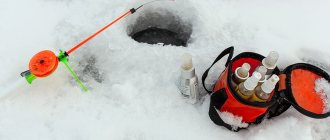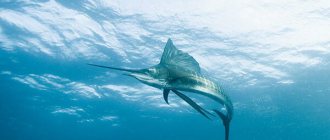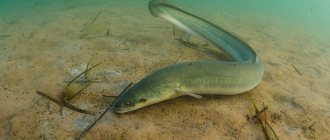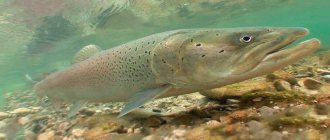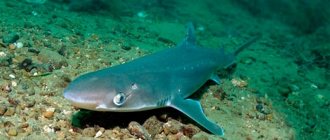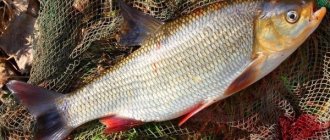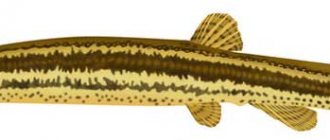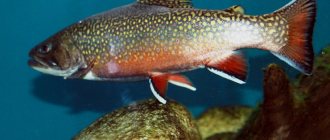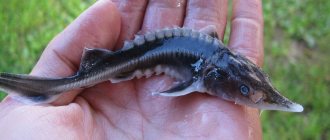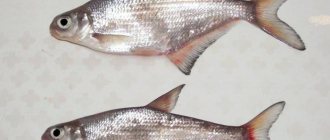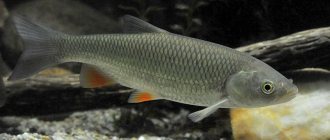Description
Bluefish have a tall body, although they are inferior to bream in width. The bluebird is flatter and slightly elongated in body, with a pointed head and mouth raised upward. Despite the short length of the dorsal fin, it is quite high. And the length of the anal fin seems disproportionately large. This fin includes up to forty-four branched rays. Despite the noticeable resemblance of the blue-brown to the white-eye, the blue-brown has smaller scales. In addition, the difference between the blue and the sopa can be easily determined by the pointed snout. Sinks are distinguished by a bluish back, where a green tint is also visible, but in a certain position and when light hits the scales of this fish, the blue tint is often brighter and more noticeable. This was probably the reason for the name of this fish. The color of the belly and sides is silvery-white with yellowish tint, and in some fish even with a reddish tint. The fins are gray and the pectoral fins have a yellowish tint.
Differences from bream and silver bream
The external description of the bluefish fish is similar to silver bream and bream. They have the same flat, tall body, similar shaped head and silvery scales. It is difficult for a novice fisherman to distinguish these types of fish and understand who is in front of him.
There are several ways in which these underwater inhabitants differ:
- The bluefish has a more elongated body, its mouth is located slightly higher than that of other bream relatives. Medium size eyes. The scales are small, and the back is blue. Fins have a pronounced dark color.
- Gustera has a taller body. The eyes are big. The tail has a round outline and a light shade. The pectoral and ventral fins are red.
- The bream has a rounded body with a thick, dark-colored back. The scales are small. The fins are mostly grey, but adults may have black fins. The eyes are small, the mouth is medium size.
All of the listed fish species are caught by fishermen. Depending on the habitat, differences can be pronounced or, conversely, blurred. Sometimes there are cases when even experienced fishermen fail to distinguish these fish.
Where does it live?
Sintsy are considered lake-river fish. But at the same time, they avoid both the fast flow of mountain rivers and the complete stillness of stagnant lakes. In fast-flowing rivers, bluegill stay in bays, at the boundaries of the core stream and the reverse current.
Sinks are not as common as bream and other related fish. For the most part, this fish is found in Central and Eastern Europe, in the European part of Russia.
It is found in the Baltic bays and in some bays of the Azov and Caspian seas.
Habits and habitats
The species is characterized by a peaceful nature and leads a gregarious lifestyle in the bottom layers at a depth of 1.5-2 meters.
Despite its status as a lake and river fish, the blue tit is demanding on water quality, oxygen levels and suspended matter. He ignores turbulent rapids and drainless, swampy, heavily silted reservoirs.
In the summer heat, bluegill go to the depths, where they feed in small groups at the very bottom. It comes out into shallow water and into the upper layers of the reservoir only in the morning and evening. With the beginning of the cold season, the fish gather in large schools and move to riverbed holes, where they wait out bad weather and severe frosts.
The optimal habitat for blue bream is calm, wide reaches in large rivers, waste lakes and reservoirs. Fish can be found not only in the basin of the Baltic, Black, Caspian, and Azov seas, but also directly in slightly salty waters near the coast.
Where is bluegill found?
The territorial distribution of the species is fragmented and is inferior in area to bream fish. Sintz can be caught throughout the European part of Russia - from the Neva and Volga to the Ural River. At the same time, it is small or not found at all in the Moscow River, Lake Onega and Svir, inhabits only the lower reaches of the Kama, and has selectively taken root in some lakes of South Karelia and in the south of Ladoga. The bluebird especially likes deep reservoirs (Rybinskoye, Ivankovskoye, Uglichskoye), where clean running water is combined with a rich food supply and a fairly hard bottom.
To learn more:
Rudd: description of fish and differences from roach
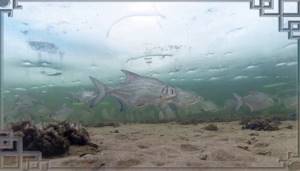
The Volga, Don, Kuban, Narva and other rivers are inhabited by an anadromous form of blue bream, which spends a lot of time on the sea shelf fattening up. This is all the more important because the fish remains active all year round, and therefore requires significant energy reserves for wintering. After the ice breaks up, flocks of blue salmon move to the banks of rivers, lakes and reservoirs that are flooded during high water for intensive feeding and spawning, if by this time the reservoir has not managed to return to its usual boundaries.
Blue bream spawning
Bluefish, like roach, rise to spawn along small rivers, but unlike roach and roach, its migration is usually shorter. The bluebird becomes sexually mature when it reaches four years of age. If conditions for growth were favorable, then sexual maturity can be achieved in the third year of life. The most active spawning of bluegill occurs at a water temperature of about 15 degrees, and this fish begins to spawn at a water temperature of 9-10 degrees. Spawning occurs in bays and in quiet sections of rivers. Sinks also spawn in flooded meadows. When unexpected cold snaps occur, blue spawning stops until the weather becomes more favorable.
Feeding and reproduction of mature blue bream
All small cyprinids are characterized by peaceful coexistence with other fish species. That is why their diet consists of plankton, benthos, ciliated and polychaete worms, small crustaceans and mollusks, and various insect larvae that live both in bottom sediments and in the intermediate layers.
In unfavorable years, the basis of the diet of the blue bream is algae, submerged plants, caviar and hatched fry of other fish. In turn, the blue tit population suffers greatly from constant persecution by perch, pike perch, pike, and burbot.
Spawning of blue salmon begins at a water temperature of +8-9°C and gradually increases its intensity as it warms up to +17-18°C. Depending on the geographic location of the region, this could be any month from April to June. The spawning ground is shallow water (0.5-1.0 m) with an abundance of vegetation, last year’s leaves, snags, and stones. Such a substrate serves as a reliable and well-camouflaging basis for 25-100 thousand sticky light orange eggs with a diameter of 0.8-1.5 mm, which are laid by the female in one go.
The time of puberty of the blue bream depends on climatic conditions, the quality of the food supply, the total population size and usually occurs in the 3-5th year of life with a length of 18-25 cm. The size of the individual directly affects the amount of eggs laid. In this regard, adult fish aged 7-8 years are several times more productive than sexually mature young fish.
To learn more:
Description of the chub - a large fish of the carp family
The incubation period for the development of eggs is 1-2 weeks. The hatched larvae, 5-6 mm long, motionlessly attach to the vegetation at the upper edge of the water and continue their growth due to the energy reserves of the yolk sac and the filtration of plankton. After 7-10 days they turn into fry, which begin to feed on nutritious benthos and by the end of summer grow to 6-7 cm.
Fishing for bluegill in open water
Fishing for bluegill in the open water season is carried out using float rods, as well as a feeder and side donks. The most productive fishing is sometimes done with a donka with a rubber shock absorber. This success is due to the fact that the “elastic band” allows you to fish in different horizons, and the bluegill is a fan of changing the “floors” of its sites . Therefore, fans of fishing on side bottoms, in particular, on the “ring”, also often change the underwater levels, either lowering the ring with leashes and hooks to the bottom, or raising it to the middle and even upper layers of water.
In summer, blue tits peck on worms, maggots, caddis and bark beetle larvae, and plant baits. In winter, bloodworms and maggots are used.
Fishing methods
Feeding activity continues throughout the year, except for 3 weeks of spawning. After the completion of spawning, the peak of the bite begins and he takes any bait throughout the day.
Tackle should be equipped with small hooks No. 13−17 according to the international classification and No. 3−4 according to the Russian classification. Despite the small weight of the fish, the main line must withstand snags on the algae. Monofilament 0.30 mm meets this requirement. For leashes, it is advisable to choose a much thinner line - 0.15 mm.
For fishing in the summer, it is recommended to use the following baits:
- Canned peas.
- Normal or sweetened vegetable oil.
- A mixture of pea puree with semolina porridge.
- Bread crumb.
- Earthworm.
- Maggot.
- Bloodworm.
In addition, you need to remember about the bait - it must be crumbly. The bites of bluegill are almost the same as those of silver bream and bream, but despite the caution, they look a little bolder. Differences in bites appear when fishing for this fish in a retrieve at different river flows.
For example, in a weak current, the signal for hooking is even an almost imperceptible immersion of the float into the water, after which the float makes a roll towards the rod (the nozzle is already in the fish’s mouth), and then accelerating movements begin in the direction of leaving.
The hook must be quick, otherwise the fish will have time to remove the bait and leave. In a fast current, the bite looks different: the float first gives a large roll and only then begins to sink.
When fishing with bottom rods with a slope, the bite is bold, because, having noticed a worm at the bottom, the fish will try to quickly grab it and carry it away. Such haste often leads to self-hooking. This is facilitated by the free pulling of the leash and line through the sinker hole.
In July and August, the bluegill is inactive due to intense heat and a decrease in oxygen concentration in the reservoir, so it stays at the bottom and feeds only at night. Seasonal cooling restores the fish's appetite. At the end of October it can be caught at any time of the day.
Sinets in winter
This fish is schooling. Effective fishing for bluegill is based on this. Once you find this catchy horizon, fishing becomes active and truly exciting. Winter fishing for bluegill is carried out according to the same principle. In addition to traditional jig fishing, when different levels are probed from the bottom to the surface of the water, a tackle called “garland” . The design features of this gear include the arrangement of several jigs at different levels, which allows you to fish several horizons in the water column at once. Moreover, the bluegill can actively peck both on ordinary jigs with bloodworms, and on various non-moth baits, for example, on “devils”.
Bluefish is considered a tasty fish, especially when dried and smoked.
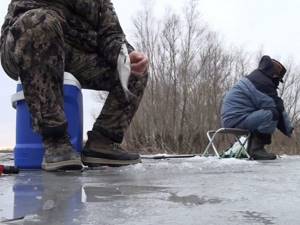
Nutrition
Adult blue breams feed mainly on zooplankton. At the same time, their diet also includes filamentous algae and other plant foods.
However, for better saturation, the fish chooses larger food:
- various larvae;
- benthos;
- worms;
- small crustaceans;
- leeches;
- shellfish
On a note! Sinks do not disdain caviar and fry of other types of fish.
Sintsy travel a lot, and they actively move around the reservoir in search of food. The greatest zhor is observed in the post-spawning period. The next surge in appetite occurs in July. The fish is also active in the pre-winter period: in October – November. Ice fishing is best in late winter on the last ice.
It should be noted that due to their low body compared to their relatives, blue chinks are desirable food for river predators:
- perch;
- zander;
- pike;
- soms
Lifestyle
Adult bluefish feed on zooplankton (small crustaceans and mollusks), as well as worms, insect larvae and parts of aquatic plants. The bluefish itself is food for large predators: catfish and pike.
Males reach sexual maturity at three years, and females only in the fourth year of life. Spawning takes quite a long time. It starts in early May and ends in mid-June. At the beginning of spawning, the water temperature is 8 degrees. The spawning period ends when the water warms up to a temperature of seventeen degrees. For such a responsible action, the bluefish chooses shallow areas with a depth of no more than fifty centimeters with underwater vegetation. Spawning occurs mainly in flooded areas.
One female lays up to fifty thousand eggs. In artificial reservoirs, a significant part of the eggs perishes due to water discharge. The eggs are relatively large, up to 1.5 mm in diameter. The eggs are pale orange in color and adhere to submerged vegetation. The incubation period lasts up to one and a half weeks. It depends on the water temperature. The warmer the water, the shorter the incubation period. The hatched larvae are about five millimeters long and periodically float to the surface of the water for several days, then sink again and attach to flooded vegetation. After six days, the larvae are able to obtain their own food. At the end of the first year of its life, the young bluebird reaches a length of six centimeters.
In summer, the bite begins immediately after spawning and ends in late autumn. Usually the bluegill stands near thickets of aquatic plants, where it feeds in shallow water.
During the day, in hot weather, it moves to deep places and waits out the heat. After sunset he approaches the shore again. In summer, any animal bait is suitable: dung worm, maggot, bloodworm. The best result is obtained with a “sandwich” - maggots and bloodworms on the hook. In winter, active biting begins immediately after freezing.
Travel around Karelia
| Winter fishing | How and what to fish in winter | Fishing methods |
| Fishing rod with a nod and jig Jigs for winter fishing Selection of jigs Reelless fishing technique Winter float fishing rod Winter zherlitsa Types of winter spinners Spinner fishing technique Nozzles for winter fishing Live bait for winter fishing Devices for winter fishing Winter fishing in Karelia Notes about fishing in Karelia | The carp family - review How to catch carp in winter Catching crucian carp in winter Winter fishing for bream How to catch podust in winter Catching gudgeon in winter Winter fishing for bleak How to catch bluegill in winter How to catch roach in winter Catching dace in winter Catching verkhovka in winter Winter fishing for ide Catching asp in winter Winter fishing for rudd Fishing in winter chub | Fish and its behavior — — Roach fishing — — Bottom fishing — — We catch bream and ide — — Chub on the bottom — — We catch pike perch and trout — — Pike fishing in the spring We catch grayling — — Carp on a plug — — Summer fish stops — — We catch perch in the pond - - Fishing at depth - - Fishing with lures - - Fishing in Finland. Video. |
| About the influence of the phases of the moon on the bite of fish Encyclopedia of a young angler in pictures Main section - ABOUT FISHING | ||
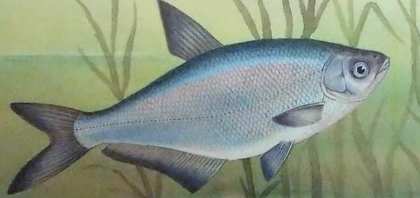
Blue Blue Blue (Abramis ballerus) is a widespread representative of bream. He looks very similar to his wide-bodied relative. This fish got its name from the distinct blueness of its scales on its back and above the lateral line.
It is easy to distinguish it from bream by the shape of its mouth: the blue bream also has a retractable mouth, like a tube, but the upper one, allowing it to take food from the surface. Unlike bream, bluefish never go into salty or even brackish waters; they live only in large, fairly deep rivers and reservoirs. As in the case of roach, in large artificial reservoirs the bluegill found more suitable conditions than in the river and began to grow faster. This is due to the fact that in reservoirs zooplankton - the main food of these fish - is usually more abundant and varied than in the river. The bluefish is not as widespread as its older relative, the bream, but in the places where it lives, it is a common fish in the catches of amateur anglers. It is especially numerous in the reservoirs of the Black, Azov and Caspian Seas. The size of this fish usually does not exceed 40 cm and weighs 0.5 kg. In large reservoirs, specimens weighing 1 kg are occasionally found. In winter, bluegill lead an active lifestyle and are caught throughout the season. The mid-winter bite can be unreliable, but if it's there, it's there.
Search Sinets are caught from deep holes, and you can often observe their movement during the day towards the shallows and back to the depths. It is not difficult to predict this movement, but this process is usually greatly influenced by anglers. The noise on the ice scares away the bluegill, and it moves under the ice during the day, sometimes very quickly, forcing crowds of anglers to run after it throughout the entire reservoir. At night, fish can feed at different depths, preferring stepped and uneven areas of the bottom. Fishing time Bluefish are caught all day long. The bite becomes active in the afternoon and evening, until dark. Moreover, at this time there can be real fish outings, when almost any bait is taken uncompromisingly and the angler can only catch! With the onset of darkness, after a certain pause, the blue tit biting can continue throughout the night. Night fishing in the area where this fish is biting can bring both large roach and bream.
Fishing methods They catch bluegill both with a regular nodding fishing rod and with a “garland” - this is the name of a fishing rod on which several jigs are mounted (usually two or three), sometimes with an end sinker. This tackle is popular on the rivers of the Black and Azov Seas. If you are fishing in a noticeable current, then arrange the tackle as follows. At the end of the fishing line there is a load (often a heavier jig), and above it there are 2-3 leashes with small jigs equipped with bloodworms or maggots, a worm or a burdock moth larva. The length of the leash should not be shorter than 100 mm, otherwise the baits are not so attractive and play weaker in the current. Night fishing is no different from bream fishing. In the same way, prepare the place in advance, feeding 3-4 points, set up a tent and settle down for the whole night. You should use no more than 1-2 float rods and one nodding rod. And this set may turn out to be unnecessary during active biting, significantly complicating and even interfering with successful fishing. They fish not only from the bottom, but also by slightly raising the bait to a height of no more than 3-4 cm.
Groundbait Good bait can be bloodworms frozen in a briquette or boiled jig. It makes sense to feed only where there is a guarantee that you will not be cut off immediately after catching the first fish. The bluebird does not like noise and moves away from such a place immediately.
Nozzle Nozzles for blue bream - bloodworms, bark beetles, worms, moth larvae. In large reservoirs where there are numerous accumulations of amphipods, it is also used. In this case, the jig can be planted either alone or simultaneously with bloodworms. Amphipods that have been cleared of their shell give good results. An excellent treat for blue breams is maggots. Today this attachment can be bought in the store at any time of the year. Larger fish bite on it. Unlike bloodworms, the fry is not able to pull the maggot off the hook and does not interfere with the fishing.
Lures The most common bait is the jig. The shape can be different, but most often it is caught on oblong ones - “droplet”, “ovinka”, “doll” made of copper wire. When fishing from a depth of 5-8 m, luminous baits show excellent results. They are especially suitable for fishing without bait. The best color for them is lemon, orange or green. The color of the jig used with the nozzle is black, brown, green, with 1-2 orange or yellow stripes.
Biting and playing The bluefish's bite is not sharp, but quite strong. With the correct placement of the nozzle, hooking is not difficult. But if the bloodworm is dressed in a stocking and there is a free edge, the bluegill can suck out its contents so neatly that the fisherman will not notice it. Fishing for large prey can be frustrating for the fisherman. Bluefish are a strong fish, and cutting the fishing line on the lower edge of the hole in such cases is far from uncommon. To prevent this from happening, you need to have a flyer with you to protect the fishing line from such a nuisance. Experienced fishermen already determine the direction of movement of the school by the behavior of the caught fish. The bluefish, having got on the hook, with a fairly gentle pull from the angler, makes the first movement after its relatives. When copying this material, a link to the site is required
It is worth looking at the following material:
How to insulate shoes for winter fishing. Photo. Winter fishing in Karelia (notes from an aboriginal) How to catch chub in winter How to catch rudd in winter How to catch asp in winter How to catch ide in winter How to catch verkhovka in winter
